The Heart of Customer Engagement
Conversation is at the heart of any relationship. Beth is Generative AI that makes possible many more conversations with your potential and existing customers.
Helpful, personalised conversations whenever they need them - day or night. Customer experience that builds and nurtures relationships. Conversations that persuade and reduce buying friction.
Beth has expert-level intelligence - enough to be your customer's personal shopper, virtual dietitian, technology advisor, wardrobe consultant, trip planner... whatever helps them get what they came to you for.
Beth also collects strategic insights as she works - and her conversations will cost you machine cents rather than human dollars.


Engineered for Trustworthiness
A Generative AI agent must earn your trust and the trust of your customer before you can deploy it safely.
Beth is the first chatbot to combine Generative AI with a comprehensive governance framework. The framework provides your specific subject matter, then constrains any language model to that matter so that it has no need to hallucinate.
Beth's governance framework acts both before AND after the model to monitor for compliance, handle PII, manage prompts and output, and collect comprehensive records.
Join the Waiting List
Register your interest. We'll keep you up-to-date with progress and get you into our Beta Program as soon as we can.
Powered by YOUR OWN Facts
AI Language models are trained on a small subset of public domain knowledge. This means that your organisation's people, problems, products, services, facts and opinions aren't a part of the model's thinking. Either because you keep these private or because they're not deemed important enough to include.
Beth fixes this by giving the AI access to a knowledge graph. This is the same technology used by chat agents from Google, Apple, Amazon, Microsoft and the other information superpowers. The knowledge graph that Beth uses is your own - built from your facts and data.

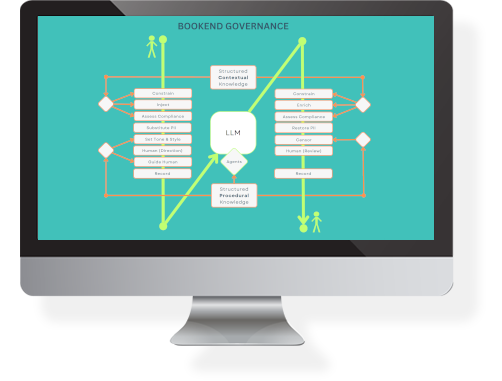
Knowledge Graph + Human = Safe AI
Carefully tuned formal knowledge structures are the only way to ensure that a Large Language Model won't hallucinate. A vector database of thrown-together documents just won't cut it. Safe AI also requires a human-in-the-loop - and not just as a passive observer.
Beth's Bookend Governance framework leverages graph and human to apply:
- Formal (graph) knowledge structures .
- Constraints on data use.
- Human-in-the-loop at both ends of the LLM.
- Chat-time injection of sensitive knowledge.
- PII detection and substitution.
- Compliance assessment.
- Automated response testing.
- Tone and style instruction and validation.
- Records collection for tuning and audit.
We've Done the Hard Work For You
Your new knowledge graph comes pre-loaded with more than 80,000 common concepts and it already understands more than one million English words.
This comprehensive framework makes it possible for Beth to work directly with ChatGPT and other Language Models in a way that simple indexing - of words or vectors - can't match.
As you build your graph over this framework, Beth's Graph WorkSpace provides clean, relevant visualisations that make it easy for you and your team to formalise your organisation's knowledge.
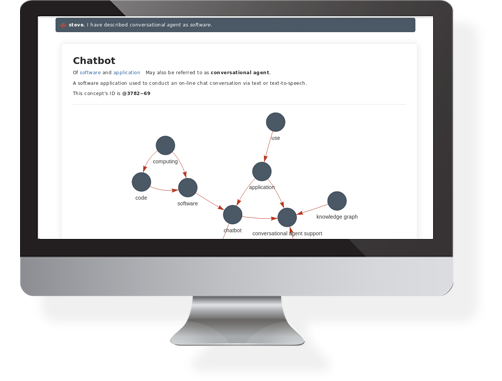
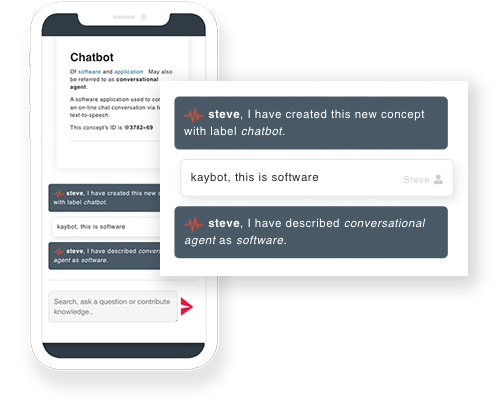
Add. Test. Tune.
Beth's Graph Workspace has skills that no other chatbot, virtual assistant, knowledge graph tool or graph DBMS can match. Conversational English is all you need to add or change facts in your knowledge graph - and to test how those facts will be used by the language model.
You, your domain experts and anyone else on your team can now just "chat" with Beth to capture your organisation’s knowledge and guarantee engaging, factual conversations. No-code and no PHD required.
Be Where Your Team and Your Customers Are
Your customers hang out in the Messenger, WhatsApp*, Telegram and Discord Consumer Channels. Your in-house knowledge consumers use Slack and Microsoft Teams Enterprise Channels. Beth gives you an AI presence in each of these, out-of-the-box.
You can also embed a simple chat widget script to put Beth into your own corporate, customer support and forum sites and onto your pages at partner sites.
Nobody knows yet just which roles and tasks will benefit from access to Generative AI. Beth's many channels let you experiment and provide ChatGPT functionality in every corner of your enterprise and its market.
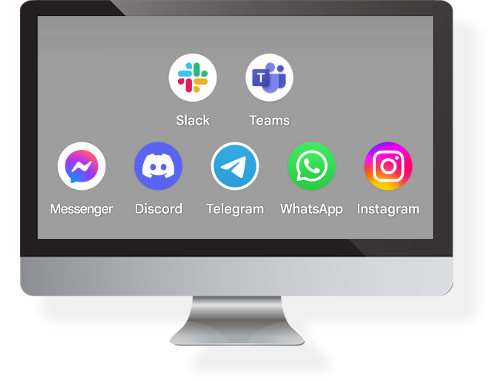
Try Some Channels
Websites, web applications and messaging channels you can test drive.
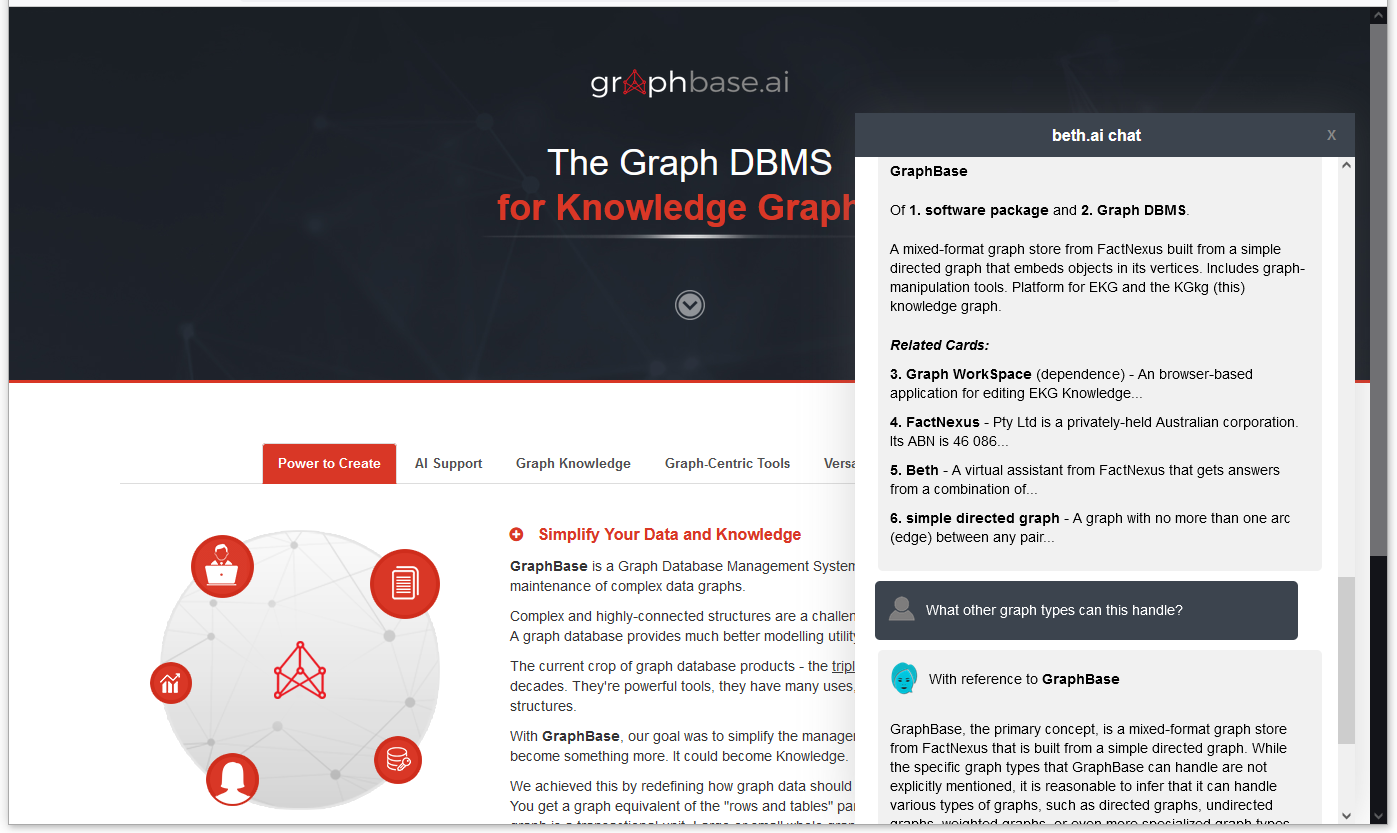
Website Agent
Your website is your front door. Add Beth to your pages or key partner pages to answer questions, simplify navigation or provide a gateway filter to your human support staff.
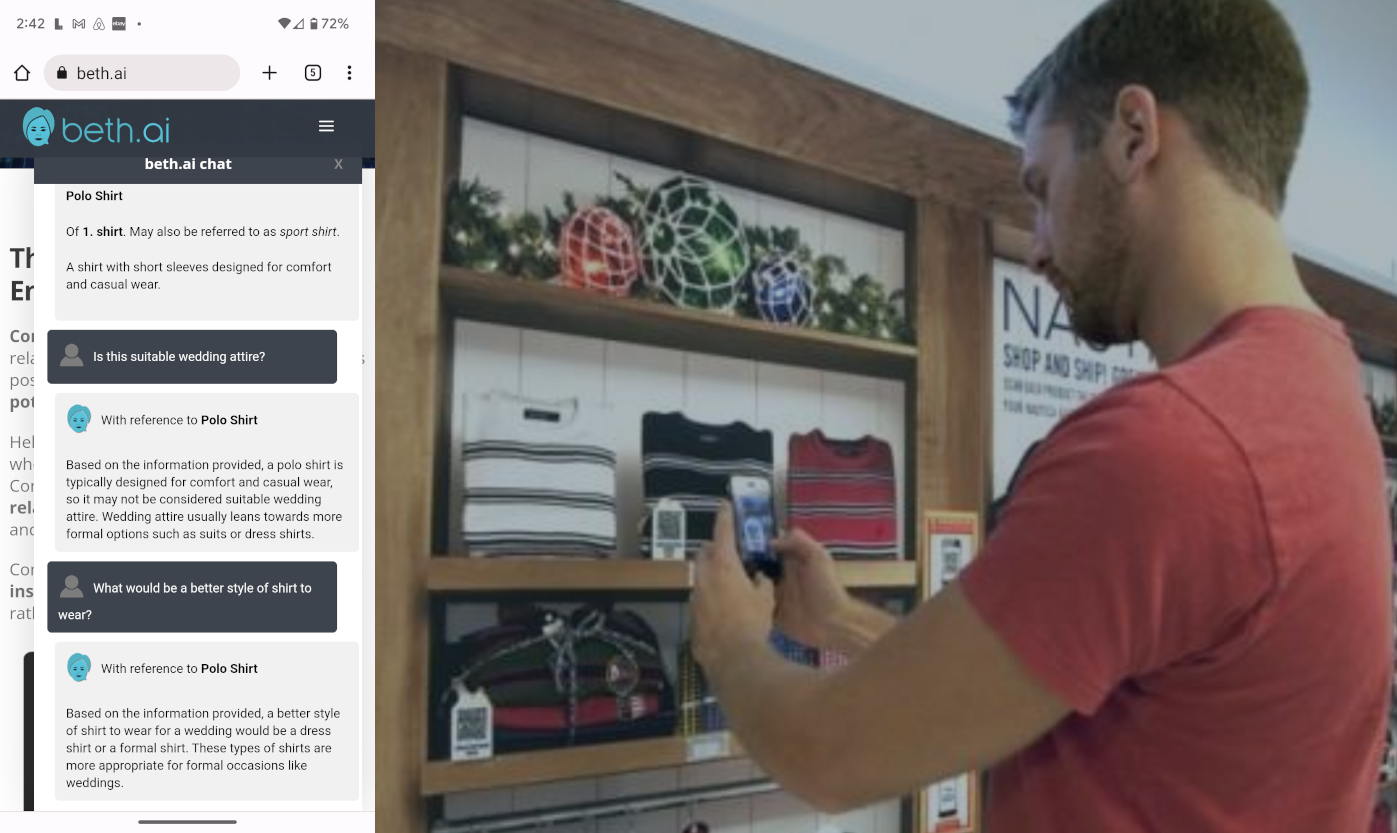
Point-of-Sale QR Codes
Add Beth to a product or promotion page, give it a QR Code - she'll provide much more information and advice than you can fit on product packaging or a printed display.
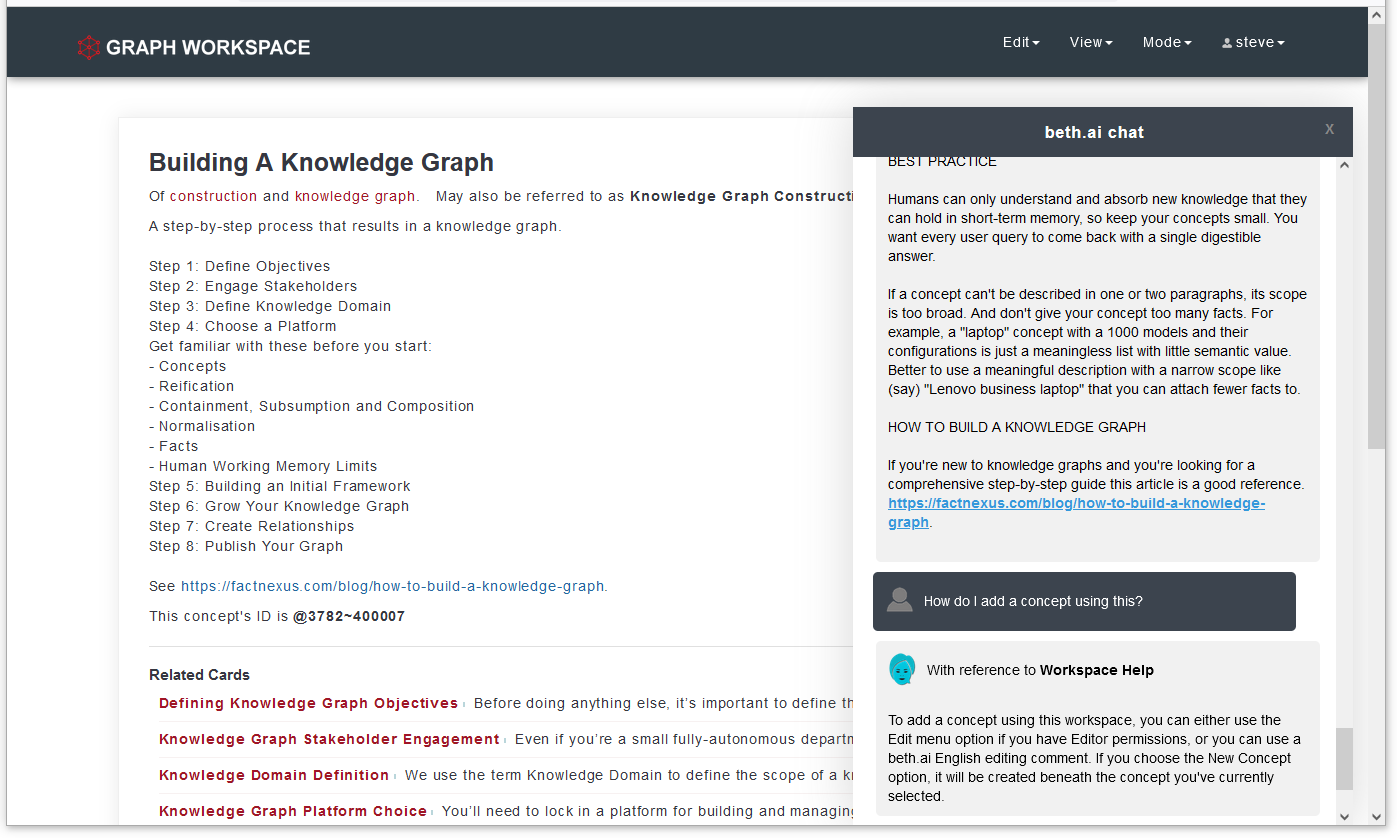
In-App Support
90% of enterprise applications are browser-based. Now you can trigger context-aware AI support from within your application just by adding Beth's javascript widget.
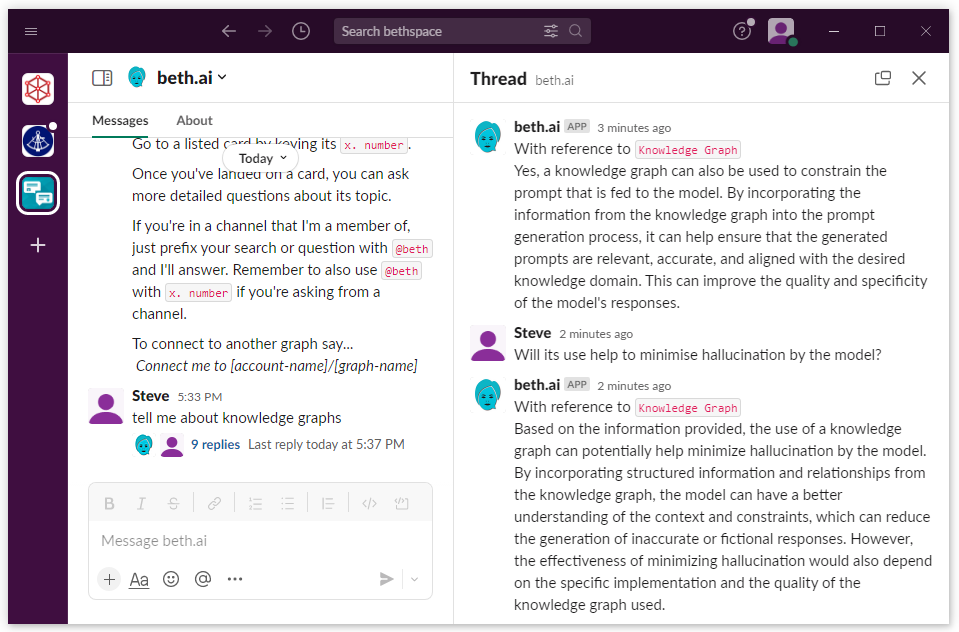
Slack
Add Beth to Slack and give your team in-app answers to any organisation, product or domain question. One click and they can also start adding to or correcting that knowledge.
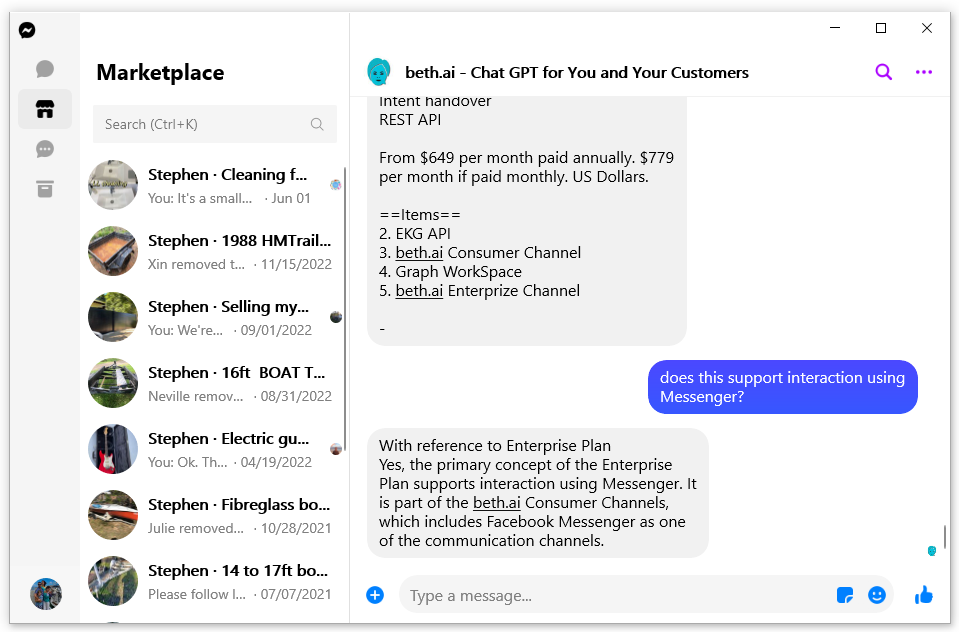
Messenger
1.3 billion people use Facebook Messenger every month and many of those are, or could be your customers. Connect Beth and make it easier for them to get their questions answered.
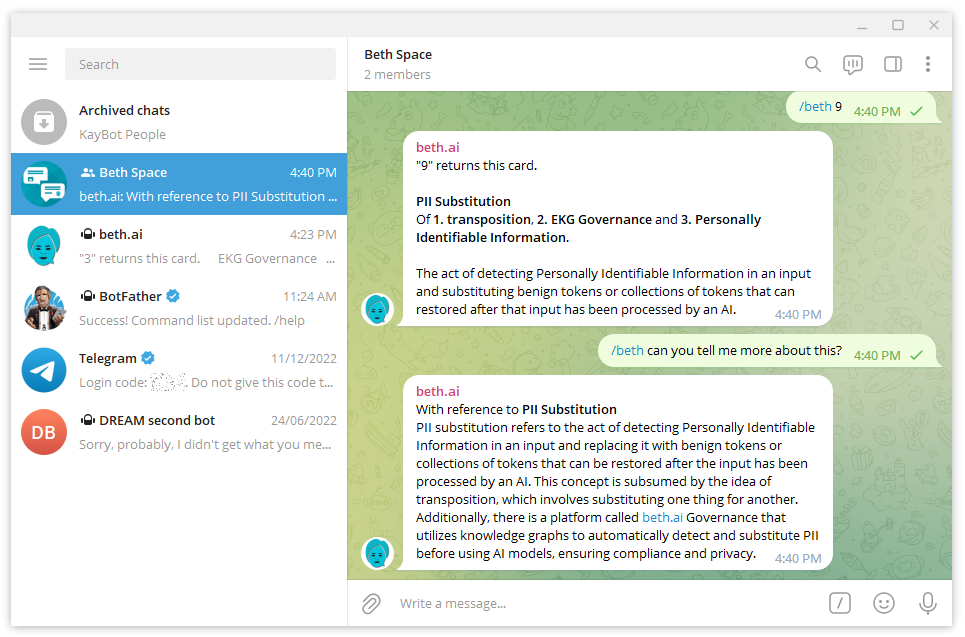
Telegram
Let your customers and followers get the official facts at any time by adding Beth to your Telegram Group or providing a link in your Channel.
Pay Only For the Answers You Need
Be up and running in minutes with industry-leading safety features including subject matter constraints, directed exploration and dossier injection.
$99/mo
Specialist
- 3,000 queries
- Uses ChatGPT
- All consumer channels
- One Workspace user
- Three on-demand graphs
- 20 stored graphs
- Table-to-Graph import
- Live chat handover
- Intent handover
Paid annually. $119/mo if paid monthly.
$299/mo
Team
- 10,000 queries
- Uses ChatGPT
- All consumer channels
- Enterprise channels
- Three Workspace users
- Four on-demand graphs
- 50 stored graphs
- Table-to-Graph import
- Live chat handover
- Intent handover
- REST API
Paid annually. $359/mo if paid monthly.
$499/mo
Business
- 20,000 queries
- Uses ChatGPT
- All consumer channels
- Enterprise channels
- Ten Workspace users
- Five on-demand graphs
- One always-on graph
- 100 stored graphs
- Table-to-Graph import
- Live chat handover
- Intent handover
- REST API
Paid annually. $599/mo if paid monthly.
Deploy agile Generative AI Customer Engagement solutions that can meet your present and future Enterprise Governance needs.
from $649/mo
Enterprise
- Per query pricing
- Bring your own models
- Per CPU/min Graph pricing
- Per user Workspace pricing
- 500 Credits (accumulating)
- Procedural Knowledge Graph
- All consumer channels
- Enterprise channels
- 200 stored graphs
- Table-to-Graph import
- Live chat handover
- Intent handover
- REST API
- Generative Insights
Paid annually. $779/mo if paid monthly.
Large Language Models (LLMs like ChatGPT) and the practices for managing them are evolving rapidly. Applications to support them in Enterprise must evolve just as fast.
Beth's Enterprise plan gives you the tools for trustworthy AI from Day One. Those tools are built, however, so that you can continually adapt to the needs of an evolving LLM landscape.
Key to this flexibility is the ability to plug in language models that best suit your needs. Also key is Beth's Procedural Knowledge Graph that lets you define the "how to" for using, managing and controlling those models.
Beyond the primary Customer Engagement tasks, plugged-in models are used for:
- PII detection
- Early determination of query "intent"
- Assessing compliance of prompt and response
- Generating test queries from your graphed knowledge
- Suggesting modifications to prompts and model outputs
- Reviewing generated output for tone and style
- Qualifying prospects and detecting buying signals
- Providing strategic insights from conversations histories.
BYO models, supported by formal procedural knowledge, provide flexibility and agility. Beth's Enterprise Plan comes with seven day human support and guidance from the FactNexus team.
Frequently Asked Questions
Every organisation has information that shouldn't leave its "walls". Beth's knowledge graph applies Subject Matter Constraints, allowing you to define which of its concepts can be passed to your language model and under what circumstances - and which can't.
Beth's knowledge graph also supports special concepts called dossiers that are only made available to the Beth with the permission of their owners. These can be used for customer, staff and other private data. They can be either posted to the graph using our API, or collected from your API when needed.
It may be years until you can plug in a Language Model that reliably reflects your organisation's values. Beth influences your model by mandating procedural knowledge graph entries for your policies, values and corporate "tone of voice". These are then used to instruct your plugged-in language model.
Large language models like ChatGPT are prone to "making things up" - particularly when the facts they need haven't been provided in their training data. Language models carry two broad classes of knowledge - procedures and facts. Beth trusts the model's procedural knowledge but constrains its use of facts to those that can be found in your knowledge graph.
Yes. If your user is has Editor permissions, they can use Workspace English to explicitly add facts to the knowledge graph. Beth may also use the history of comments made against each concept to augment the knowledge provided to any language model task that requests that concept.
If you've "plugged-in" your own language model, however, it may also learn from the information that Beth passes to it. You should always check this with the model's provider. Turnkey plan models don't get to keep your conversations and learn from them.
Turnkey plans use OpenAI's gpt-3.5-turbo (ChatGPT) model by default, though this may change as new models become available. The Enterprise plan also allows you use to plug in other models. Contact us to find out more.
Graph WorkSpace is a chat window on steroids. It's a place where you can add new concepts and facts to your knowledge graph using conversational English and simple forms. It also lets you test customer queries and fine-tune Beth's responses to them by modifying the your facts.
WorkSpace has visual tools that let you see the shape of your emerging knowledge graph and it maintains a conversational audit trail of who changed what.
Consumer channels are: Facebook Messenger, WhatsApp*, Telegram, Discord and the beth.ai Chat Widget.
Enterprise channels are: Slack and Microsoft Teams.
* Coming soon
A query is any question or comment from a user in any connected chat device or in any Consumer or Enterprise channel. A request made using Graph Workspace or the REST API is also a query. Query counts are collected from all graphs that have been run during the month and then totalled.
Running your knowledge graphs "on-demand" is how we keep your costs down. It's a strategy that some call "serverless" computing. When a query arrives at your on demand graph, the graph is started to service that query. The graph then stays running while it's getting queries, and for a few more minutes after the last query is received.
Each graph runs on its own isolated graph database, so it can take a few seconds to start. However, it's usually less than the time it would take a human or a language model to type a response.
For Business and Enterprise plans, time-critical and high-use graphs can be set to "always on" in your Graphs Control Panel.
Yes you can. The Graphs Control Panel gives you comprehensive control over your account, its subscription plan and your graphs. Your plan may place some resource constraints on your graphs, but within those constraints you can control their resource footprint, their integrations and many other properties. For more detail see the FactNexus EKG Graphs Control Panel Reference.
Very. Your knowledge and data are encrypted at rest, and in transit. Enterprise users even get to control the key used for that encryption.
There are no multi-tenancy risks to your in-memory and working knowledge either. Each of your graphs runs on its own isolated graph database.
To register for an Essentials, Specialist, Workplace, Team, Business or Enterprise plan, first register for a Free Trial.
When you're ready, you can choose your plan by clicking Change Plan in the Account Details tab of your Graphs Control Panel.
Enterprise plan CPU-minutes, Workspace users and queries are paid for using beth.ai Credits. An Enterprise plan includes 500 credits per month. This is enough to cover the beth.ai resource needs of most enterprises. Credits that aren't used are accumulated for the next billing period and, if needed, more can be bought either manually or automatically.
It's a subscription strategy that gives you predictable costs and no risk of "bill shock".
Yes. You can build, modify and get answers from your graphs - and integrate them with other applications - using the EKG REST API.
What's more, the API hides the structural complexity inherent in any knowledge graph by providing simple abstractions - Concepts, Facts, Cards and Dossiers.
From your Graphs Control Panel you can "bulk load" existing data into your knowledge graph. The product list from your WooCommerce, Squarespace, Shopify or other e-commerce store for example. Or the tags, titles and URLs of the articles or snippets from your Wordpress, Wix, Zendesk, Confluence or other Knowledge Base.
Prepare the table as a CSV (Comma Separated Value) file, then ingest it from your Graph Control Panel. Alternatively you can POST it using the REST API. For more detail see the FactNexus EKG Table-to-Graph API Reference.
Yes. Beth understands the semantics of a user's "I want to talk to a human" request and will take them to the relevant "handover" concept. It's then one click to connect with the live chat framework of your choice.
beth.ai is a powerful Knowledge Agent, but she's not designed for building procedural chatbot pathways. She does, however, have the semantic prowess to understand a user's intent.
To connect with your existing agent, you create a knowledge graph concept for each intent your procedural agent handles. Using a strategy we call "Intent Handover", Beth infers your user's intent then directs them to your bot via that concept.
See it working - ask Beth something like "Why is my messenger integration not working?"
Alternatively, you can use the REST API to collect responses from Beth and pipe them through your existing bot framework.
First up, ask Beth.
If Beth can't answer your question directly, you can ask to chat with a live agent.